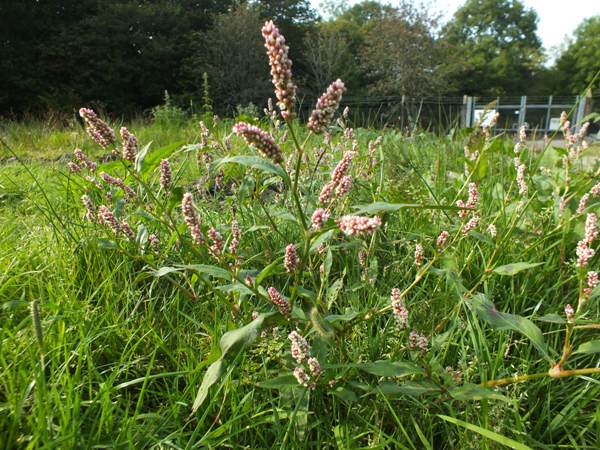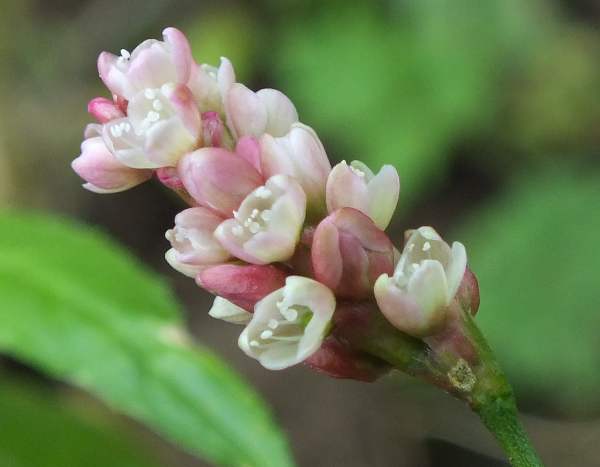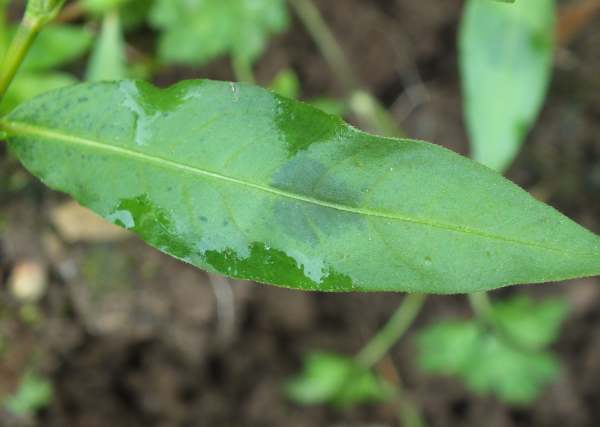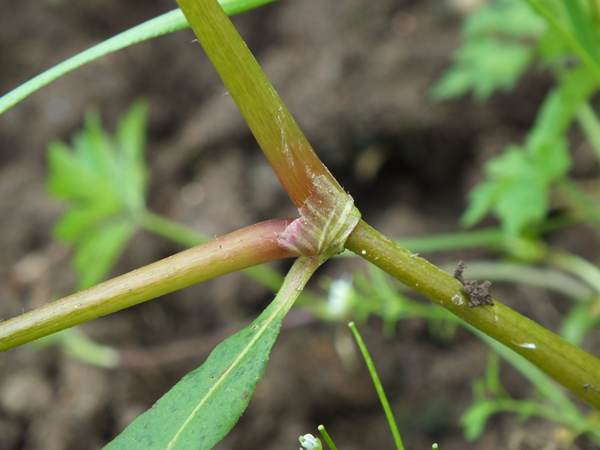Persicaria maculosa - Redshank
Phylum: Magnoliophyta - Class: Equisetopsida - Order: caryophyllales - Family: Polygonaceae

The beauty of some wildflowers, of which Redshank is a prime example, is overlooked by all but those who stoop to study them close up.
Description
As in this example, there are usually dark blotches, often shaped rather like arrowheads, on the leaves of this annual plant. The stems are sometimes, but far from always, flushed with red - hence the common name.

Growing in tightly-packed elongated ellipsoidal groups, the tiny flowers of Persicaria maculosa are pale pink, but while in bud they are a much deeper pink. The perianth (the corolla of infertile structures around the reproductive parts) of each tiny pink flower consists of four or five petal-like lobes that are fused near to the base. Within the perianth are six white stamens, two fused carpels and two styles.
Distribution
Common throughout Britain and Ireland, Redshank occurs throughout temperate parts of Europe and Asia. It is an introduced species in North America.
Habitat
You will find plenty of Redshank in marshy areas, although it is also quite commonly seen in dryareas where the ground has been disturbed - building sites, for example.

Blooming Times
In Britain and Ireland Redshank blooms from June through to October.
Uses
Generally considered a nuisance weed of cultivated land, Redshank has been used as a source of a yellowish dye. The leaves and young shoots are cooked eaten as leaf vegetables in some countries. (We strongly advise against eating or using as medicines any plants without first obtaining qualified professional advice.)
Etymology
Persicaria, the generic name, relates the shape of leaves of this group of plants to those of a peach tree.
The specific epithet maculosa means spotted; it refers to the dark blotches on leaves of Redshank.

It is from the reddish colour of the stems, most particularly immediately above branching nodes, that Persicaria maculosa gets its common name Redshank.
Similar Species
Amphibious Bistort Persicaria amphibia has similar flowers; its long-stalked leaves are a clear distinguishing feature; the leaves of Persicaria maculosa are almost stalkless..:
The pictures of Persicaria maculosa shown on this page were taken in West Wales during July and August.
Sue Parker's latest ebook is a revised and enlarged second edition of the acclaimed Wildflowers in the Algarve - an introductory guide. Full details here...
Buy it for just £3.95 on Amazon...
Please Help Us: If you have found this information interesting and useful, please consider helping to keep First Nature online by making a small donation towards the web hosting and internet costs.
Any donations over and above the essential running costs will help support the conservation work of Plantlife, the Rivers Trust and charitable botanic gardens - as do author royalties and publisher proceeds from books by Pat and Sue.



